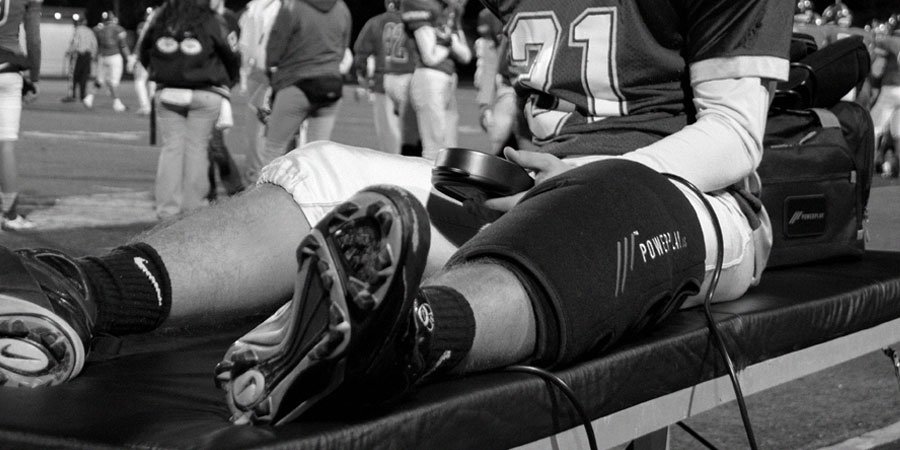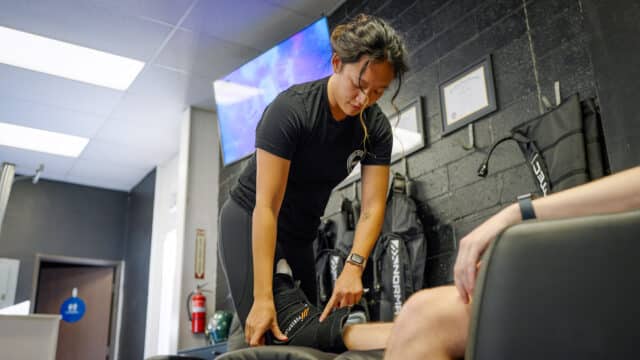Wrist injuries can happen to anyone, including athletes, musicians, or even students and professionals typing at their desks. In this blog, we take a look at common wrist injuries, their causes, and treatment options.
Types of Common Wrist Injuries
Wrist injuries can sideline athletes and affect daily activities. A few of the most common include:
- Wrist Sprains: One of the most common wrist injuries occurs when ligaments are stretched or torn.
- Wrist Fractures: Distal radius fractures are the most common type of wrist fracture, occurring when the radius bone near the wrist breaks, often due to a fall on an outstretched hand.
- Tendonitis: Inflammation of tendons connecting forearm muscles to hand bones, often resulting from repetitive movements or overuse. This condition typically causes pain, tenderness, and swelling, especially during activities like gripping or twisting the wrist.
- Carpal Tunnel Syndrome: Compression of the median nerve in a narrow passageway on the palm side of the hand that is surrounded by bones and ligaments. This causes tingling, numbness, and sometimes weakness in the hand or arm.

Activities Prone to Wrist Injuries
Certain activities can put more stress on the wrist joint, increasing injury risk:
- Racquet Sports: Tennis and racquetball involve forceful wrist movements.
- Gymnastics: Weight-bearing on extended wrists increases injury risk.
- Weightlifting: Improper form can place excessive stress on wrists.
- Boxing and combat sports: Repetitive, high-impact forces involved in punching, blocking, and grappling can be hard on the wrists.
- Contact Sports: Falls onto outstretched hands commonly cause sprains and fractures.
- Typing/Computer Work: Repetitive motion can lead to carpal tunnel and tendonitis.
Symptoms and Diagnosis
Wrist injuries typically present with pain, swelling, and limited range of motion. The severity of sprains can range from mild (Grade 1) discomfort to severe (Grade 3) with complete ligament tear(s).
Healthcare professionals diagnose these injuries based on physical examination and imaging studies like X-rays or MRIs.
Read about a guitarist who used PowerPlay during his recovery from tendonitis and arthritis.
Treatment and Recovery
Treatment approaches vary depending on injury severity and type. Common treatment protocols include:
- Initial Care: Immediate response, including rest and cold therapy, can reduce acute inflammation and pain in your soft tissues.
- Physical Therapy: Targeted exercises restore strength and mobility to the wrist.
- Supportive Devices: Braces and wraps provide stability during healing.
- Progressive Return: Gradual return to activity prevents re-injury.
Recovery times range from several weeks for minor sprains to months for severe injuries or post-surgical recovery.

Wrist Injuries and Cold Compression Therapy
Cold compression therapy combines two powerful recovery tools: cryotherapy and compression. They represent two parts of the familiar R.I.C.E. mnemonic (rest, ice, compression, elevation).
The American Society for Surgery of the Hand recommends cold therapy as part of the standard treatment protocol for acute wrist injuries to reduce pain and swelling while promoting optimal healing conditions.
Discuss with your healthcare provider whether cold compression therapy could benefit your wrist injury recovery plan.
PowerPlay’s Cold Compression Wrist Wrap
PowerPlay’s specialized wrist wrap delivers targeted cold therapy to the wrist. The wrist wrap is designed to be used with the PowerPlay pump to combine the benefits of intermittent pneumatic compression and cold therapy.
The information featured on this page is subject to our standard content policy and disclaimer. It is available for informational purposes only and is not intended as a substitute for professional medical advice.




